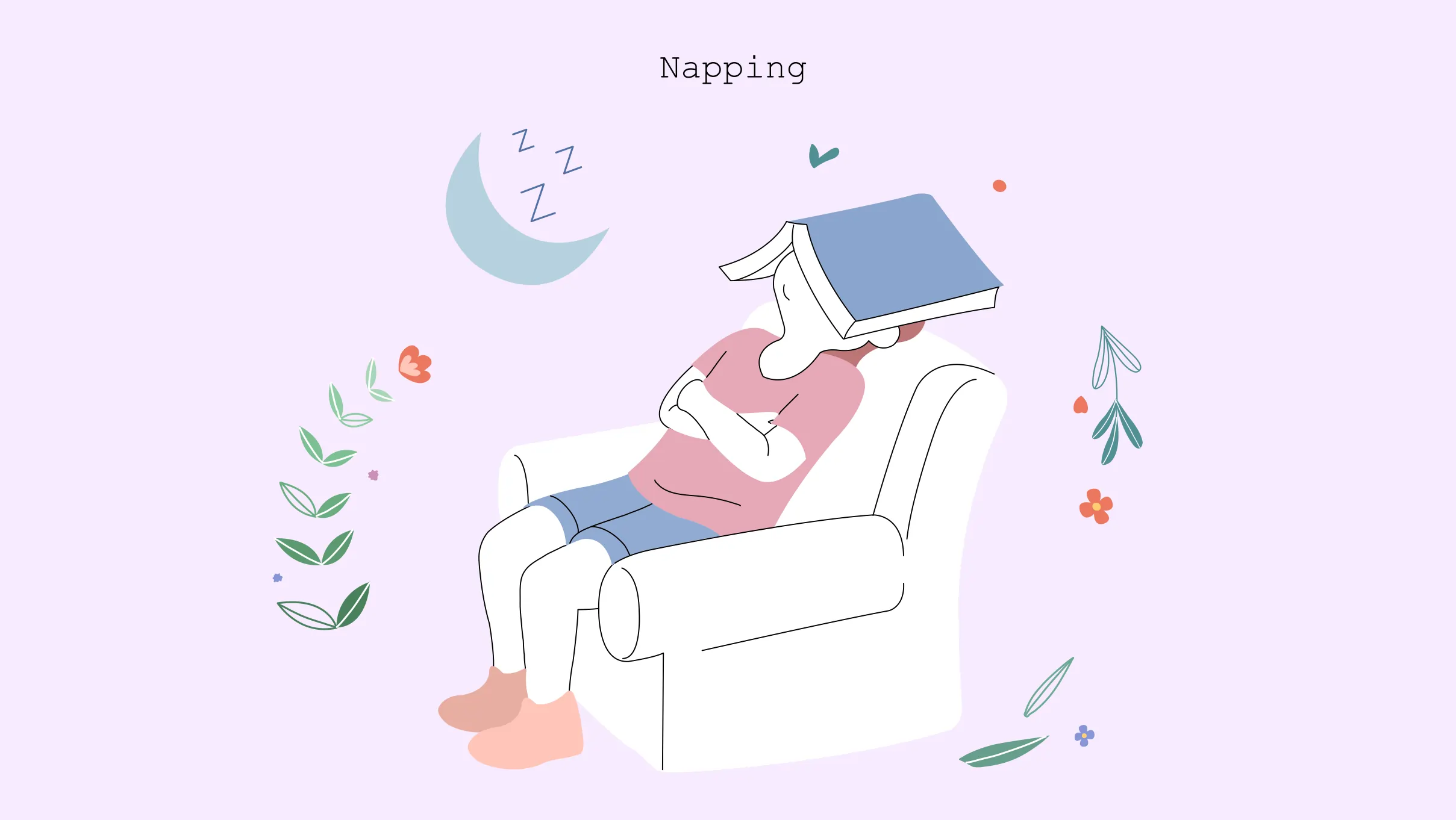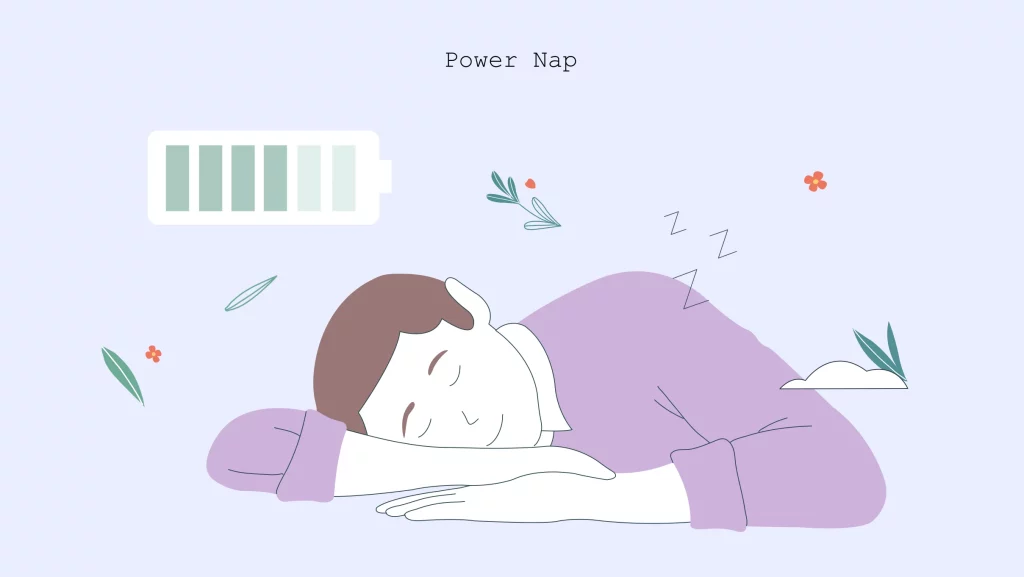Napping: Benefits and Types
Written by

Medical reviewed by


86% of Indians feel napping at work improves their productivity. And in recent news, we have a renowned name in the mattress industry – Wakefit offering their employees ‘Right to Nap’ at work for 30 minutes. All these news and facts talk highly about napping, but is it worth the acknowledgement? What is napping? Napping is resting or sleeping for a brief period to relax and recharge yourself. Many people find napping helpful, while others find it disruptive to sleep. The benefits of napping can be observed if you know the ideal nap length and suitable time of the day. Otherwise, it ought to backfire.
If you are eager to climb the corporate ladder, and relish success, read along to learn how napping can help your work-life.
Are Naps Good for You?
Can napping reap similar benefits for everyone? No. Certain specific factors need to be evaluated to anticipate the benefits of napping. Check your age, length of napping, time, and the purpose behind your napping. Not all naps are similar in kind, and learning what would suit you is essential. If you are experiencing fatigue or going to have a long day at work or for similar reasons, you can incorporate napping.
Ideal Nap Length According to Your Age
The ideal nap length for adults is around 20 minutes if your goal is waking up all rejuvenated and focused. The shorter the nap lengths, the better for adults to wake up all revitalised. But, a 2019 study highlighted how a 25, 35, and even a 45 minutes nap declined the signs of stress and fatigue in physically active men. When it comes to children, their napping time is quite different. While newborns take ample naps throughout the day, young babies also engage in multiple naps.
For toddlers and young children, an hour’s nap effectively recharges their minds and bodies. However, due to hormonal changes, teenagers might be affected by fatigue, career, studies, and more. According to a 2019 study, around 30 to 60 minutes of napping is the ideal length.
When Should You Nap?
The surge in productivity will depend on your napping time. Most humans experience a drop in productivity and alertness during the afternoon, right after gulping down our lunch. This happens because the core temperature of our bodies tends to drop signalling the release of melatonin. Therefore, the time between 2 pm to 4 pm is when taking a nap might be fruitful for you. But, if you feel energised, there is no need for a nap. On the other hand, if you feel sleep-deprived, you might consider napping before the afternoon timeline.
Types of Naps
Do you know there are five different types of naps, each serving exclusive functions? This is why you need to analyse your purpose behind taking a nap. Is it just fatigue or sleep deprivation? Or sleep loss? Or just to enjoy? Let us check the types.
Recovery Nap
Accurate to its term, a recovery nap is when you are experiencing sleep deprivation and tired the following day. You nap the next day to feel energised and get back to slog.
Prophylactic Nap
Have you noticed night shift workers schedule nap time before and during their shifts? That is precisely what a prophylactic nap is. This is done to stay active and avert sleepiness at work.
Appetitive Nap
An appetitive nap is when you simply enjoy the joy of sleeping to wake up all fresh and in a positive mood.
Fulfilment Nap
Fulfilment nap occurs in children and toddlers when they engage in multiple napping shifts. This happens because children tend to sleep more than adults.
Essential Nap
When you take frequent naps during sickness, those naps are known as essential naps. Sleeping during sickness provides the body with the required time to heal itself.
Benefits Of Taking a Nap
Naps offer memory improvement, lifting the mood, increased alertness, more creativity, and numerous other benefits. Let us get going.
It Can Improve Your Memory
Not just sleep, but napping helps in storing memories similar to a full night’s sleep. Therefore, taking a nap right before the exam might help you keep all the information you have studied.
Connecting Dots Easier
Napping makes it easier for the brain to connect information by drawing strings. Napping has been shown to help in cognitive development.
It Might Help You Climb the Corporate Ladder
Napping makes way for climbing the corporate ladder, especially when you indulge in afternoon naps. Since our performances tend to dip post afternoon, as discussed above, we all need a good push to increase productivity, and a nap provides exactly that.
It May Lift Your Mood
Whenever you are feeling low, napping acts as a mood booster. However, if not napping, at least resting for an hour or so would make you feel more relaxed.
Need to Be More Alert? Nap
Right when you feel the urge to sleep post lunch, opt for a 20-minute nap and see how it works wonderfully in increasing your alertness.
Small Naps Bring Big Benefits
Opt for a maximum of 30-minutes of nap and notice the increase in energy. Ensure that your napping time doesn’t exceed 30 minutes, which will result in grogginess.
Naps are Better Than Caffeine
Are you under the pressure of finishing a chapter or a work project? Then instead of moving towards the cup of coffee, get a nap. Napping helps in improving memory and learning.
They Can Ease Stress
Excess stress? Opt for a 30-minute nap and wake up feeling relaxed. It helps reduce stress, and anxiety, and inducing relaxation.
They’re Good for Your Heart
Taking a nap for approximately 45 to 60 minutes can benefit the heart by lowering blood pressure after experiencing mental stress.
They Can Make You More Creative
REM sleep leads to creativity in mind, and to reach that stage, you need 70 to 90 minutes of sleep to reach that stage. Therefore, opt for napping during the REM phase if you need creativity.
Naps Can Help You Sleep Better at Night
Napping between 1 P.M. to 3 P.M. during the afternoon leads to better sleep at night when combined with moderate exercises in the evening.
Drawbacks of Taking a Nap
Certain people must avoid it no matter how productive napping makes you feel. Check if you are also one of them. For example, people experiencing insomnia need to avoid napping during the day as it might lead to sleep loss during the night. Another group of people are the ones who suffer from sleep inertia. Napping might benefit them from feeling sleepy after waking up. But if you think that sleepiness persists even after napping, this might not be the right solution for you.
How to Take the Best Nap
There are ways when you can experience the best nap of all time. Check the below points.
Set an Alarm
Your napping time needs to be between 10 to 20 minutes, as is the most suitable time for many. Setting the alarm for not more than 20 minutes will prevent sleep inertia.
Nap Early
Always plan your nap halfway after waking up, preferably during the afternoon. Napping a few hours before your bedtime might disrupt your sleep at night.
Create a Sleep-Friendly Environment
You might not have access to the best mattress, but at least ensure that the napping area is dark, mild temperature, and quiet. There is no point in being sleep-deprived, even while napping.
Set Aside Your Worries
Give your worries a break while napping; let them go. Worries tend to keep us awake, and you will not experience the goodness of napping.
Reflect On Why you’re Napping
Set your intentions clear behind the napping period. If you focus on why you are napping, it will lead to fulfilling your purpose.
Could a sudden increased need for naps indicate a health problem?
Yes, a sudden increased need for naps can potentially indicate a health problem. It may be a symptom of various underlying conditions such as anemia, thyroid disorders, sleep disorders, chronic fatigue syndrome, or certain infections. If someone experiences an abrupt change in their energy levels and finds themselves requiring frequent naps despite adequate sleep, it is advisable to consult a healthcare professional for further evaluation and diagnosis.
Conclusion
Napping, a short activity of a maximum of 60 minutes, offers abundant benefits. From handling stress to providing a refreshing start to work, you will get it in this particular period. Just analyse the purpose behind napping, and you will relish the napping time.
FAQ
Does napping mean sleep?
Yes, napping can be sleeping or resting for a short period, especially during the day.
Why is napping so good?
Napping is good because it reduces stress, and fatigue improves memory, boosts heart condition, leads to quick actions, and so more.
Are 30 minutes enough for napping?
Yes, 20 to 30 minutes is the average time of napping for most adults.
How long is a perfect nap?
A perfect nap is generally for 20 to 30 minutes. Post that, it might lead to sleep inertia.
people like this article
Written by

Medical reviewed by




